On September 10-11, William N. Valavanis hosted the 5th US National Bonsai Exhibition in Rochester, New York. For all of the work he put into making the event a success, I’d like to send a big THANK YOU!
The quality of the exhibit trees was dramatically better than it was two years ago. The general quality of trees, pots, stands and accents made the event a pleasure to experience, despite some unseasonable heat Saturday. I spent most of the weekend in the vendor area across from the exhibit where I got a chance to meet a number of you – to those who stopped by, thanks for saying hello!
I’ve included a handful of photos from the event below – a few more will follow in subsequent posts. To get the full experience, I highly recommend ordering the show book directly from International Bonsai.
California juniper
The California juniper above was displayed at the inaugural Artisans Cup last fall. The tree has filled in over the past year to make a great backdrop for the dramatic twists near the tree’s apex. Such movement is not typical in California junipers – it’s one of the details that makes this large tree stand out.
The accent displayed with the juniper is fun, full, and appropriate for the season.
Accent
Boon Manakitivipart took the award for best medium conifer with a grafted Sierra juniper. The tree has dramatic deadwood that’s unusual for such a compact specimen.
Best medium conifer – Shimpaku grafted onto Sierra juniper
The cascade black pine below looked perfect despite the fall show date. It can be hard to get needle length right on black pines so I appreciate it when they come out just right.
Cascade Japanese black pine
One of my favorite trees in the exhibit was a large Japanese white pine. The tree is a twin trunk kokonoe – a cultivar similar to zuisho known for its short needles.
Japanese white pine – kokonoe
The ponderosa pine below has fun movement. The branches appear somewhat young in their development. As the branch pads develop, I expect the tree to look even more impressive.
Ponderosa pine
My favorite aspect of the Rocky Mountain juniper below is the tight movement in the middle of the trunk. The branch pads are early in their development – I expect they will improve quickly in coming years.
Rocky Mountain juniper
The medium-sized shimpaku below is an elegant tree. There are few straight lines to be seen and the lifeline is narrow and sinuous. The pot is awesome.
Shimpaku juniper
A clump-style black pine made a graceful counterpoint to some of the bulkier trees in the exhibit. The smaller branch pads create a light feeling that highlight the movement of the trunks.
Clump-style Japanese black pine
The red pine below has very interesting movement. The display is simple. There is good contrast between the main tree, the second tree and the accent in terms of foliage and pot style and color.
Japanese red pine
Below is a massive black pine. The foliage is essentially a single large block with subtle breaks here and there. Roots emerge high on the trunk adding interest to the lower part of the tree.
Japanese black pine
I’ll end today with Eric Shikowski’s mountain hemlock – winner of the National Award, aka Best in Show. The tree is a large mountain hemlock that was displayed at the inaugural Artisans Cup. It’s a favorite of mine as the foliage is full and the trunk is interesting.
National Award winner – mountain hemlock
While appreciating the tree from several angles, I noticed that the direction of the tree changed when viewed from a few degrees to the left or right. In the above photo, the apex looks like it points to the right. When viewed straight on, this is less apparent. When viewed from a few degrees to the right, the silhouette has a very different character.
Mountain hemlock viewed from several degrees to the right
From this angle, the horizontal portion of the trunk appears to be straighter and the movement of the tree is decidedly left. It’s a tiny example of how fun it can be to see the trees in person as they can look quite different even when viewed from subtly different angles, especially in the case of trees with well-defined silhouettes.
Stay tuned for some of the deciduous highlights from the exhibition on Friday.
Subscribe to Bonsai Tonight
New Posts Delivered Every Tuesday and Friday
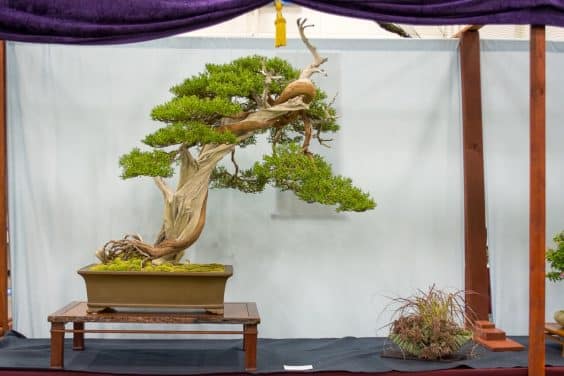
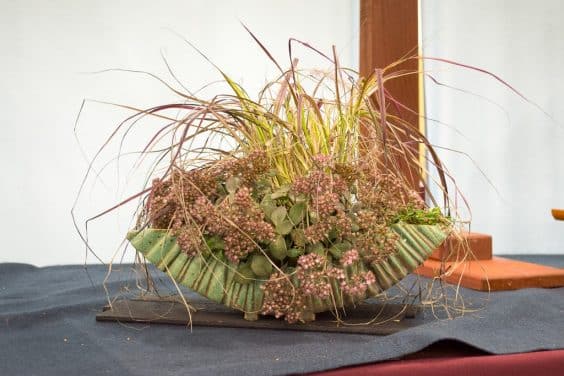
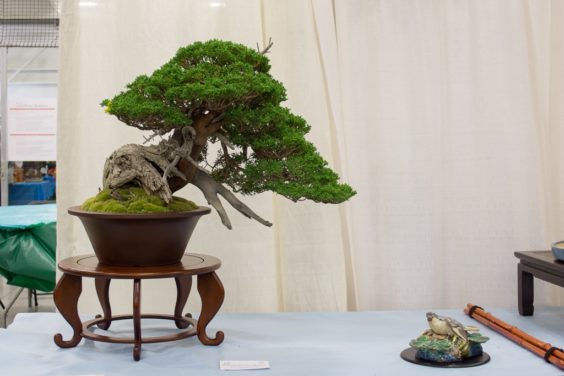
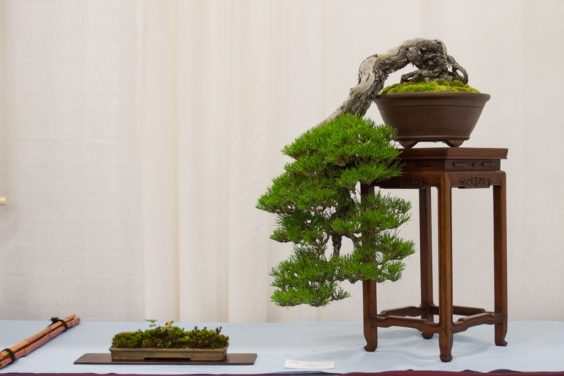
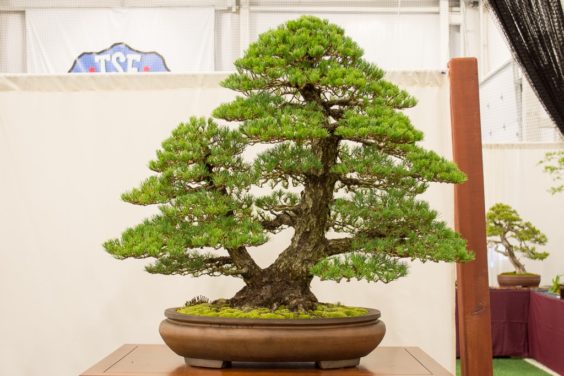
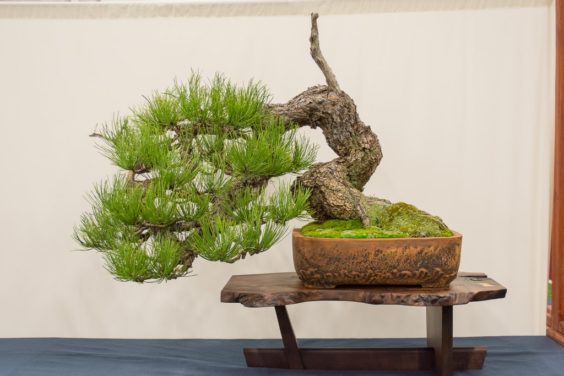
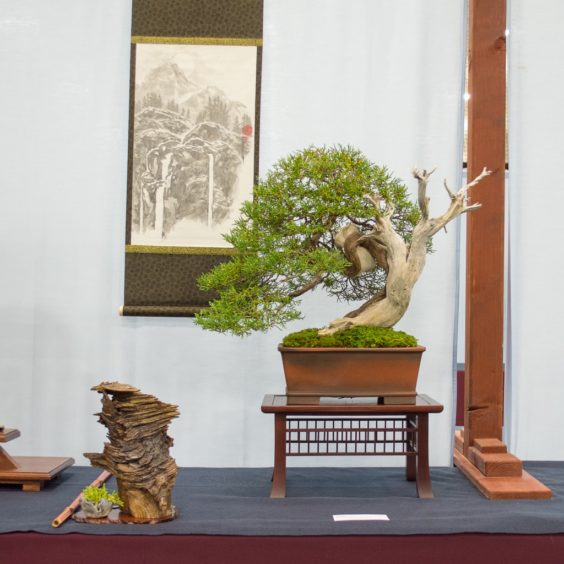
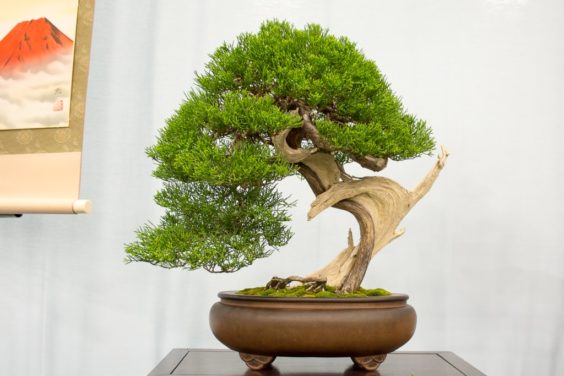
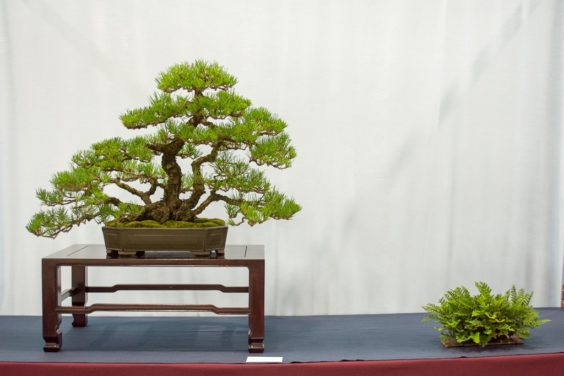
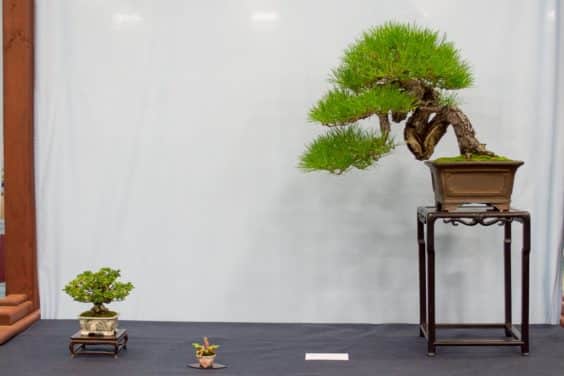
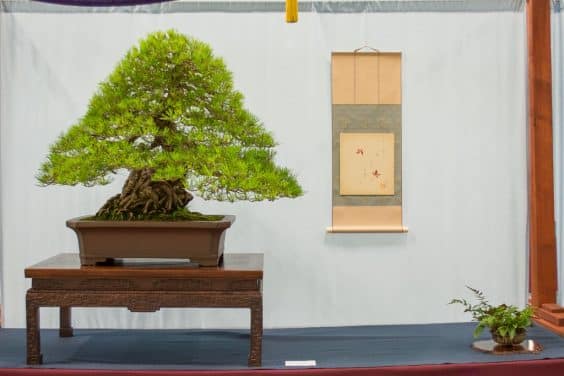
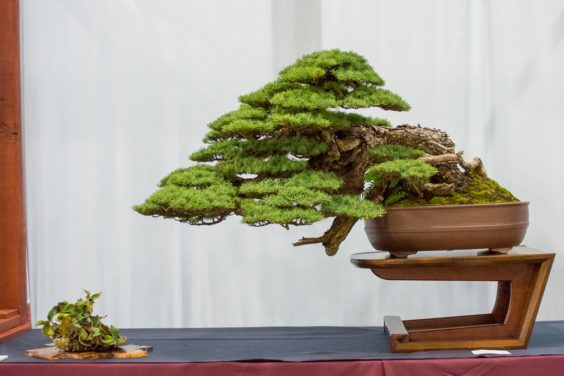
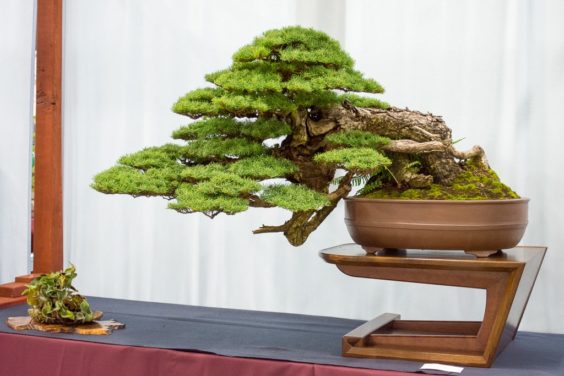
Mac McAtee says
No deciduous trees in the show?
Jonas Dupuich says
Hi Mac – I’ll share pics of deciduous bonsai and some of the more creative entries on Friday.